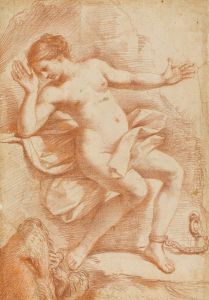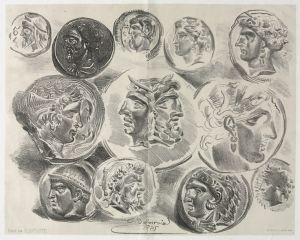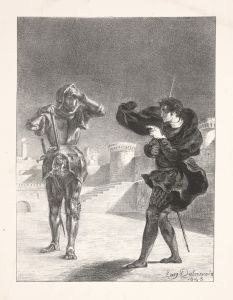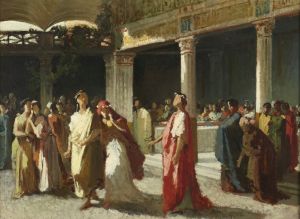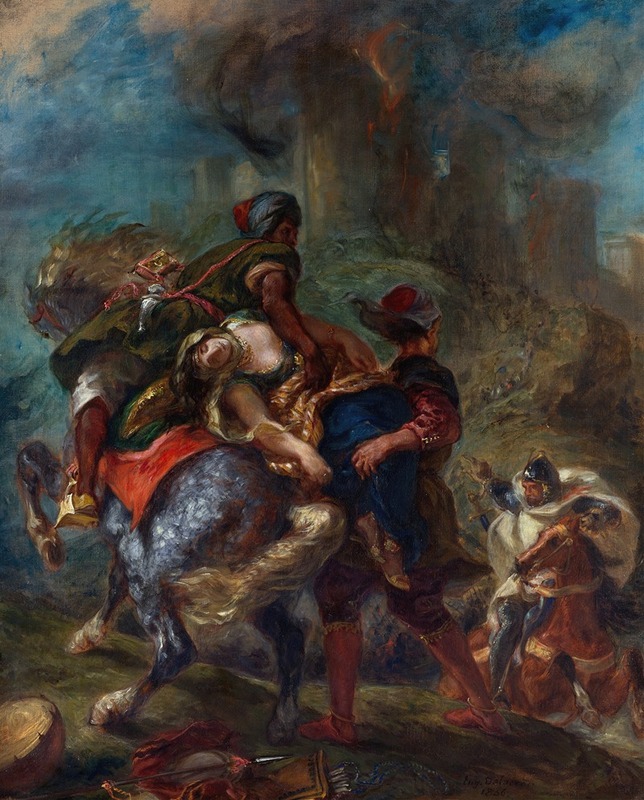
The Abduction of Rebecca
A hand-painted replica of Eugène Delacroix’s masterpiece The Abduction of Rebecca, meticulously crafted by professional artists to capture the true essence of the original. Each piece is created with museum-quality canvas and rare mineral pigments, carefully painted by experienced artists with delicate brushstrokes and rich, layered colors to perfectly recreate the texture of the original artwork. Unlike machine-printed reproductions, this hand-painted version brings the painting to life, infused with the artist’s emotions and skill in every stroke. Whether for personal collection or home decoration, it instantly elevates the artistic atmosphere of any space.
"The Abduction of Rebecca" is a painting by the renowned French Romantic artist Eugène Delacroix, completed in 1846. Delacroix, known for his vibrant use of color and dynamic compositions, was a leading figure in the Romantic movement, which emphasized emotion and individualism, often in response to the rationalism of the Enlightenment.
This particular painting draws its subject from Sir Walter Scott's novel "Ivanhoe," published in 1819. The novel is set in 12th-century England and follows the story of Wilfred of Ivanhoe, a Saxon knight, during the time of the Crusades. One of the key characters in the novel is Rebecca, a beautiful and virtuous Jewish woman who becomes a central figure in the narrative.
In "The Abduction of Rebecca," Delacroix captures a dramatic moment from the novel where Rebecca is kidnapped by the villainous knight Bois-Guilbert. The scene is charged with tension and movement, characteristic of Delacroix's style. The painting depicts Rebecca being carried away on horseback, her expression a mix of fear and defiance, while her captor, Bois-Guilbert, appears determined and forceful.
Delacroix's use of color and light in this painting is particularly noteworthy. The artist employs a rich palette to convey the drama and intensity of the scene. The contrast between the dark, menacing figure of Bois-Guilbert and the lighter, more vulnerable form of Rebecca highlights the emotional and physical struggle depicted in the artwork. Delacroix's brushwork is energetic and fluid, contributing to the sense of movement and urgency.
The painting is also significant for its exploration of themes such as conflict, cultural tension, and the clash between different worlds, which are prevalent in Scott's novel. Delacroix was known for his interest in exotic and historical subjects, and "The Abduction of Rebecca" reflects his fascination with the medieval past and the romanticized view of chivalry and heroism.
"The Abduction of Rebecca" is housed in the Metropolitan Museum of Art in New York City, where it remains an important example of Delacroix's work and the Romantic style. The painting continues to be studied and admired for its artistic merit and its ability to convey complex narratives and emotions through visual art.
Delacroix's interpretation of Scott's novel not only showcases his skill as a painter but also his ability to translate literary themes into compelling visual stories. His work on "The Abduction of Rebecca" exemplifies the Romantic era's emphasis on drama, emotion, and the power of storytelling through art.






